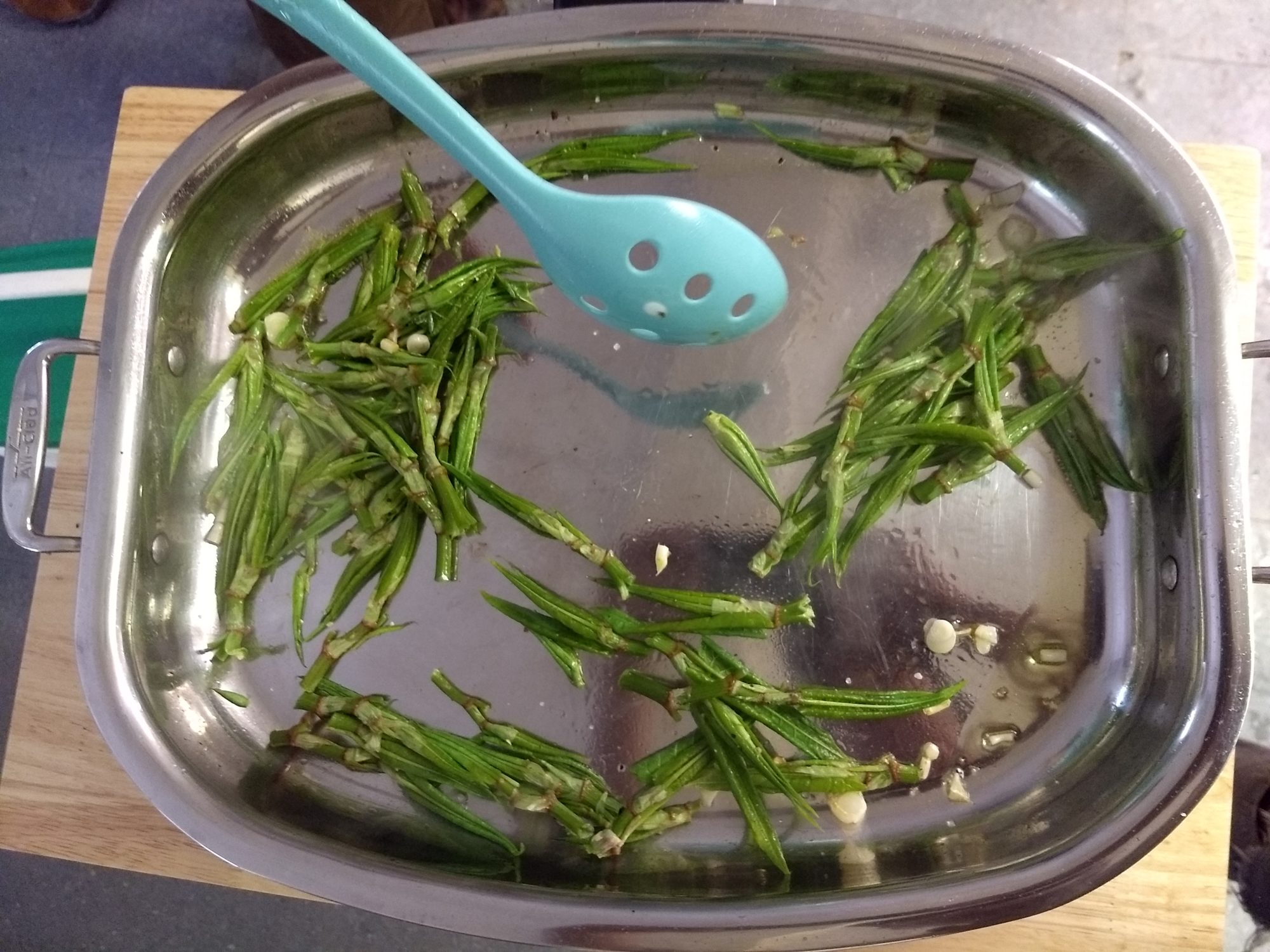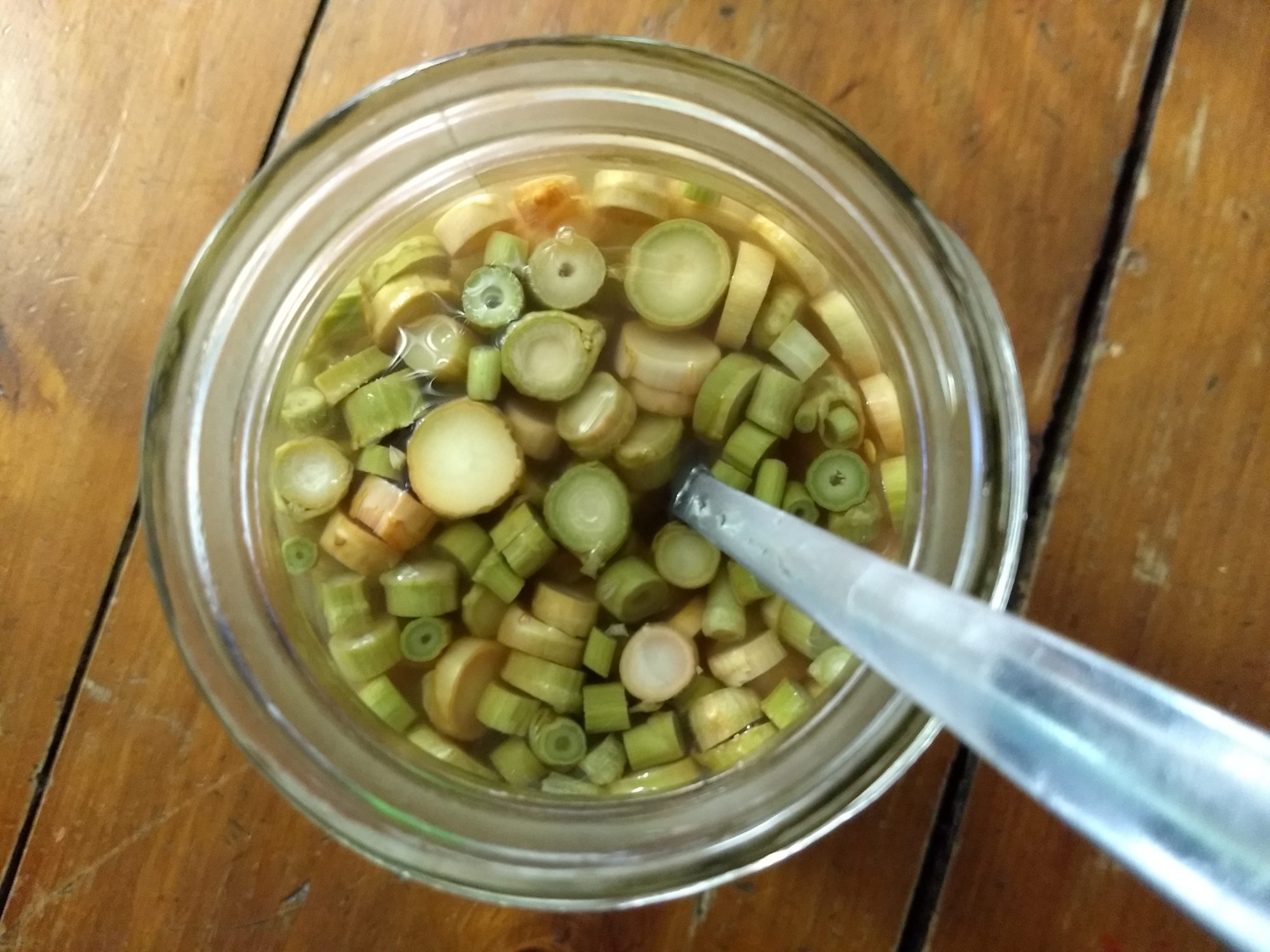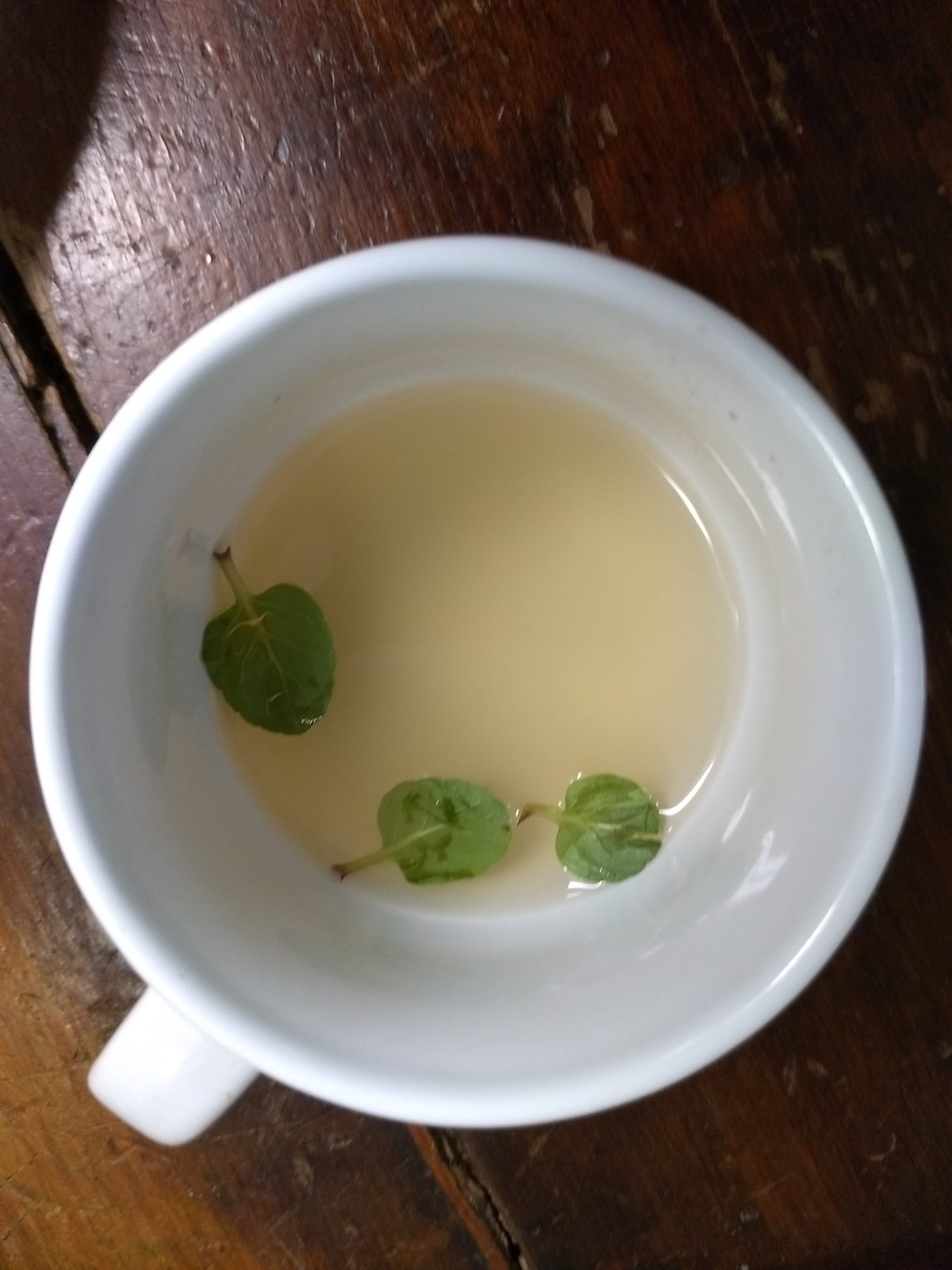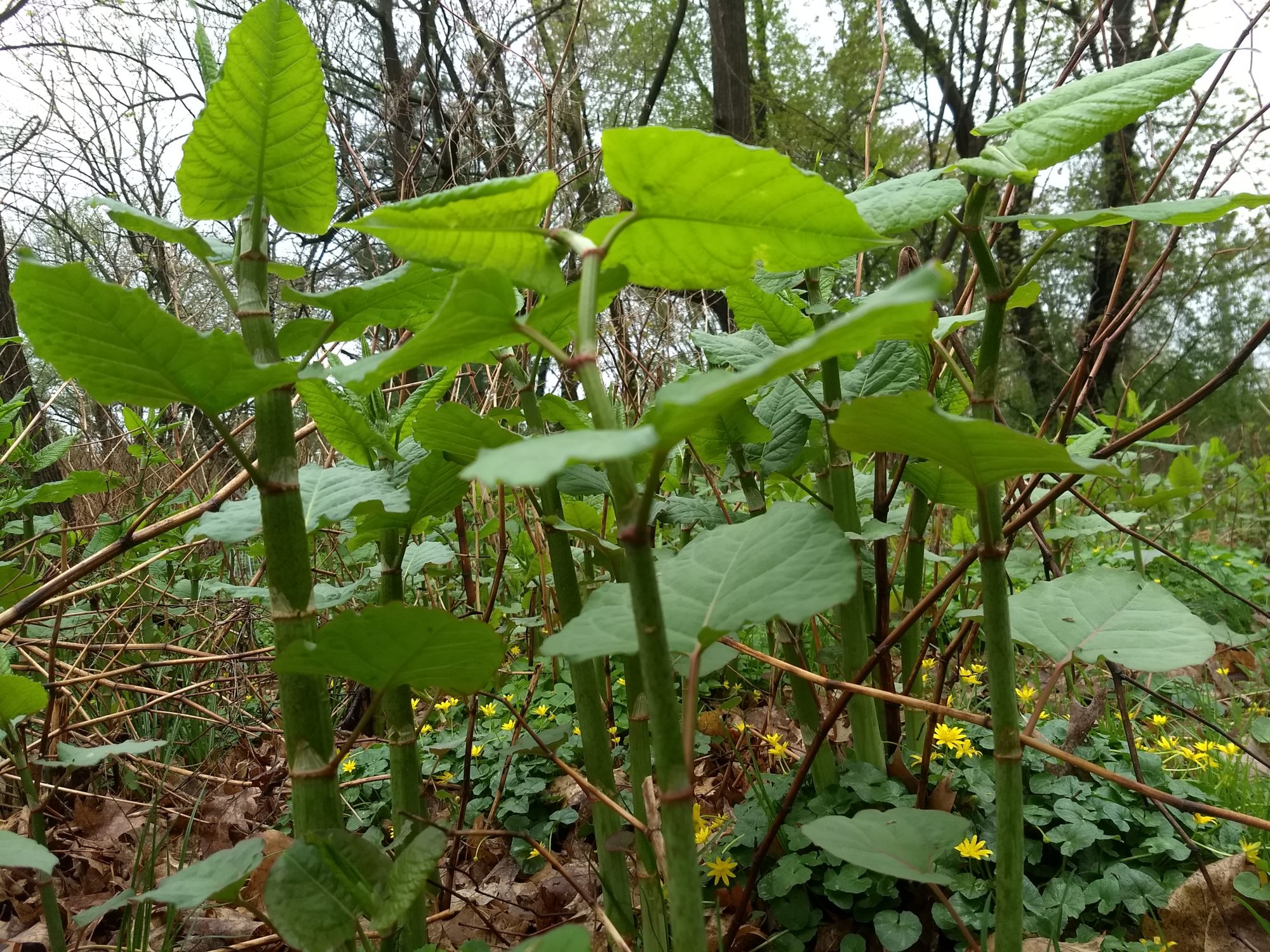
Japanese knotweed (Reynoutria japonica, Fallopia japonica or Polygonum cuspidatum) was originally introduced to the United States as an ornamental plant in the late 1800s and is now found in (at least) 39 states over a wide range of sites. Although considered extremely invasive, this plant however has edible shoots in Spring and roots that have been found to have medicinal value.
Japanese Knotweed is an upright, herbaceous, perennial plant with hollow, red-speckled bamboo-like stems which can grow over 10 feet tall when mature. It spreads by its roots, or rhizomes, and pieces of this plant can root themselves if cut and discarded. Knotweed’s broad green leaves grow to be roughly 6 inches long and 4 inches wide. Lacy white clusters of tiny flowers bloom in late summer. Knotweed tolerates a wide variety of soils and growing conditions from sun to shade, but it grows especially well in moist areas with plenty of sun. It is very hardy, difficult to remove, and tends to take over when introduced.
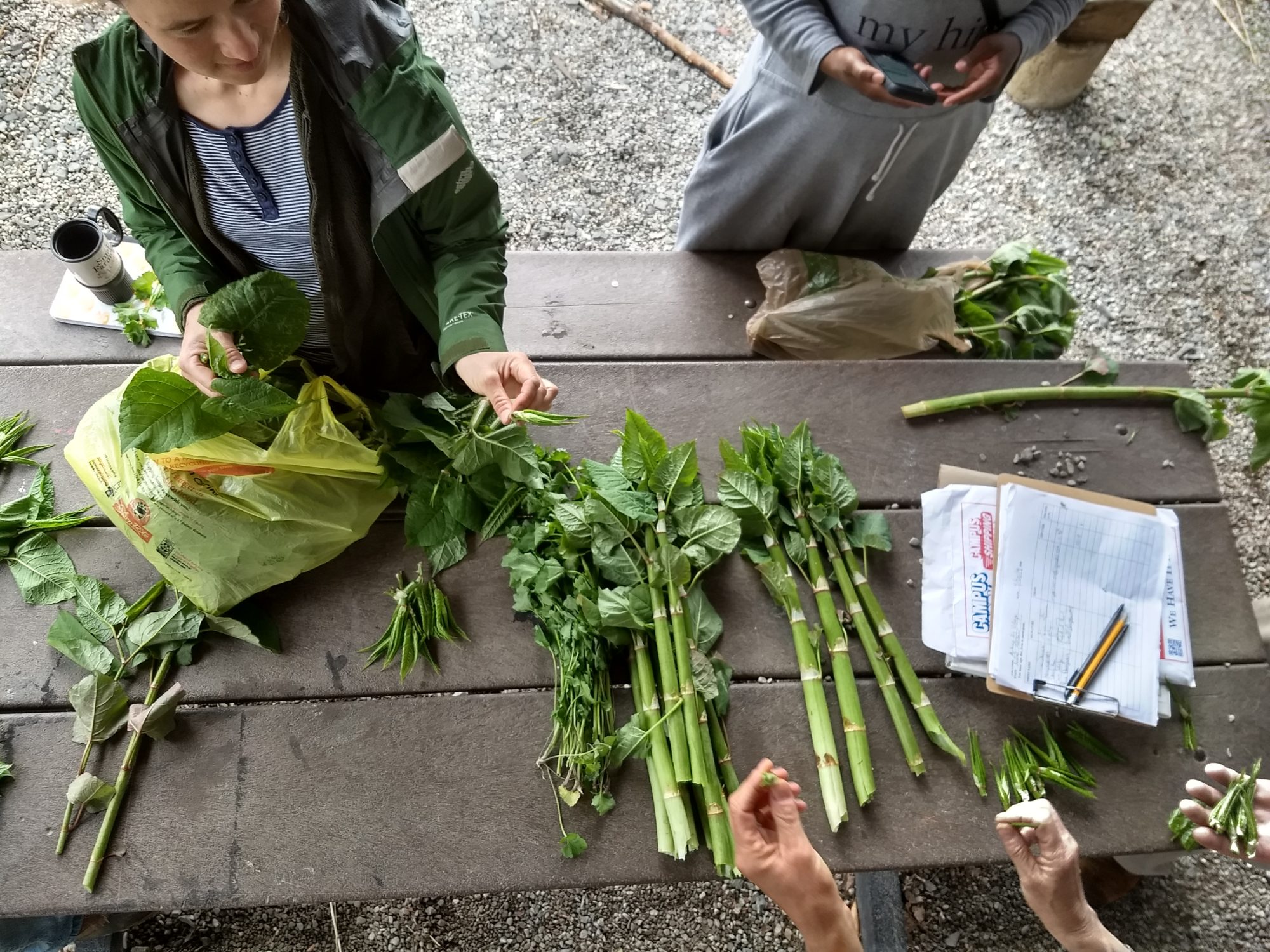
NOTE: Please read our full disclaimer at the end of this article before harvesting or consuming Japanese Knotweed.
Early spring shoots and leaves are edible and have been described as a cross between asparagus and rhubarb. Roots contain the highest known concentration of resveratrol in plants—the same powerful antioxidant found in red grape skin and red wine. Mature shoots are much tougher and need to be peeled before eating and can be eaten raw, grilled, sautéed, pickled and more. Knotweed can also be used in pies. soups, aspics, sauces, jams, and chutneys, as many high-end restaurants are doing as they embrace the trend for foraged foods. Its sour flavor is often compared to rhubarb and can be substituted in recipes. Japanese knotweed and the phenolic compound that is especially found in this plant’s roots, Resveratrol, is of interest for its antioxidant activity and for its effect on the human immune system and possible usefulness against the bacteria that causes Lyme disease.
Proceed with caution, however. Do not harvest knotweed from anywhere you find it as it is often sprayed with herbicides in attempt to combat it. Only harvest from an area you know has not been sprayed and from soil that is not contaminated. Knotweed may cause gastrointestinal issues for some, especially when more than a small amount is consumed. This can be testified to from some folks we know.
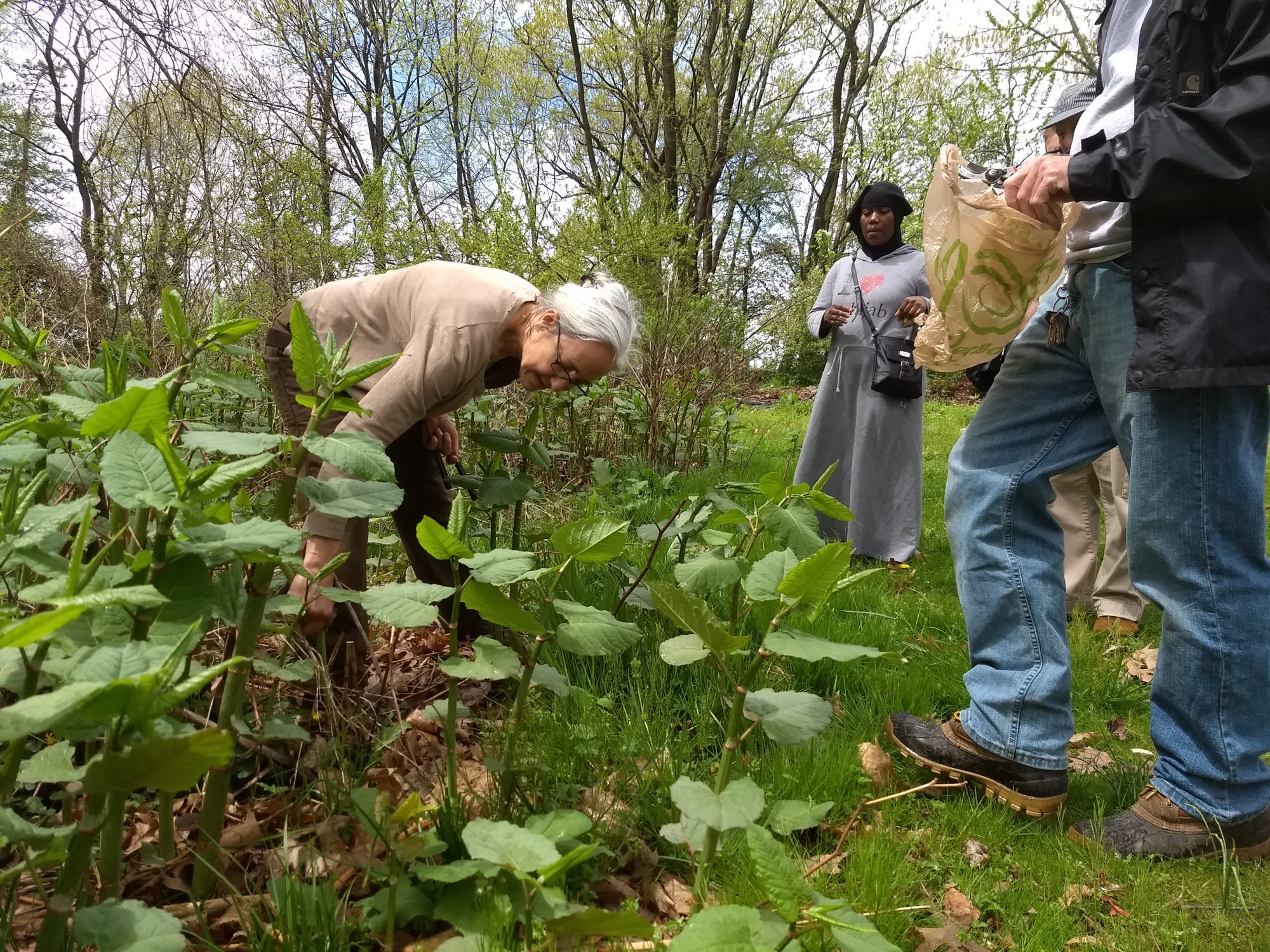
The blossoms are beloved by many insects such as butterflies, beetles, wasps, and bees — in fact, knotweed is valued by some beekeepers as an important source of nectar for honeybees at a time of year when little else is flowering, producing a mild-flavored version of buckwheat honey (knotweed and buckwheat are in the same family). Knotweed stalks can be cut and dried to make mason bee hotels.
Resveratrol extracted from Japanese Knotweed is also now being used as an organic bioungicide spray that helps a variety of crop plants resist a range of fungal and bacterial diseases.

Sautéed Japanese Knotweed 
Japanese Knotweed Pickles 
Japanese Knotweed Tea with Japanese Knotweed Simple Syrup
Knotweed Recipes
Japenese Knotweed Quick Pickles
Sweetened Japanese Knotweed Puree
Disclaimer
The Philadelphia Orchard Project stresses that you should not consume parts of any wild edible plants, herbs, weeds, trees, or bushes until you have verified with your health professional that they are safe for you. As with any new foods that you wish to try, it is best to introduce them slowly into your diet in small amounts.
The information presented on this website is for informational, reference, and educational purposes only and should not be interpreted as a substitute for diagnosis and treatment by a health care professional. Always consult a health care professional or medical doctor when suffering from any health ailment, disease, illness, or injury, or before attempting any traditional or folk remedies. Keep all plants away from children. As with any natural product, they can be toxic if misused.
To the best of our knowledge, the information contained herein is accurate and we have endeavored to provide sources for any borrowed material. Any testimonials on this web site are based on individual results and do not constitute a warranty of safety or guarantee that you will achieve the same results.
Neither the Philadelphia Orchard Project nor its employees, volunteers, or website contributors may be held liable or responsible for any allergy, illness, or injurious effect that any person or animal may suffer as a result of reliance on the information contained on this website nor as a result of the ingestion or use of any of the plants mentioned herein.
SAFETY PRECAUTION: While there are many plants which are helpful and beneficial for us to partner with, there are plants that are dangerous for us to consume or even to touch. It’s important that we take the necessary precautions – in a city space: avoid harvesting from places with pollution or runoff; avoid harvesting endangered plants; understand there are some plants used medicinally only in small doses vs some that can be eaten with relatively little concern. The most important thing is that you trust your body, go slow with incorporating any new plants into your diet!
This POP Blog Post was written by POP staff.
SUPPORT US! If you found this entry useful, informative, or inspiring, please consider a donation of any size to help POP in planting and supporting community orchards in Philadelphia: phillyorchards.org/donate.
